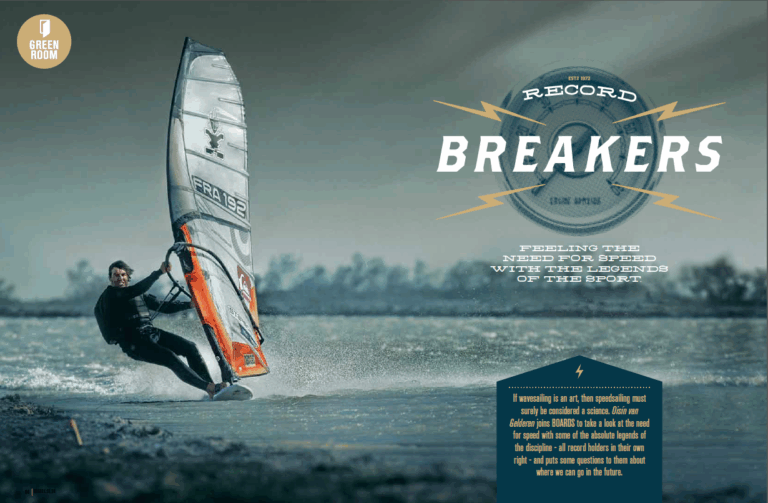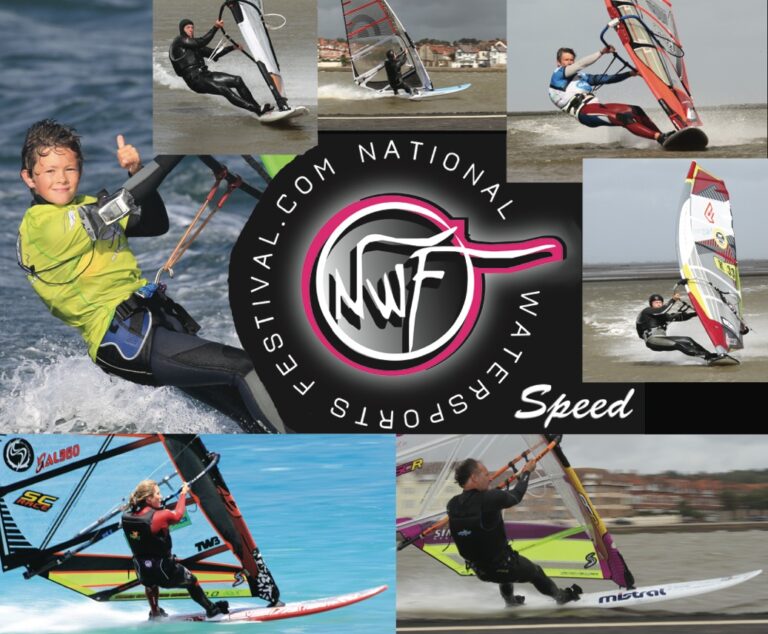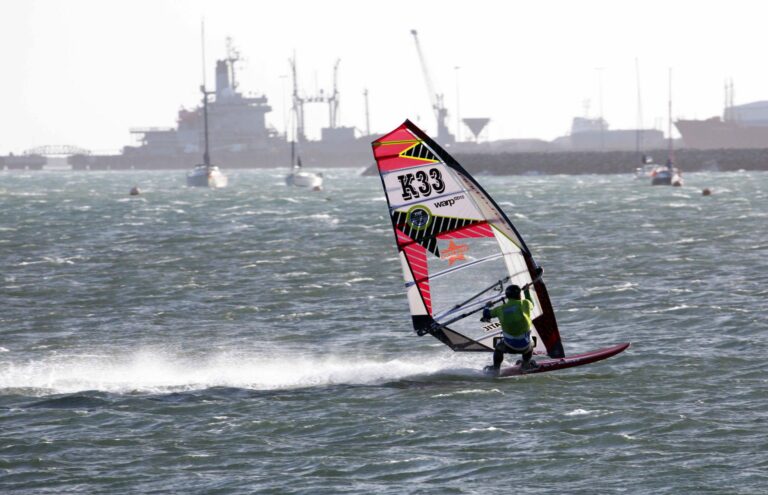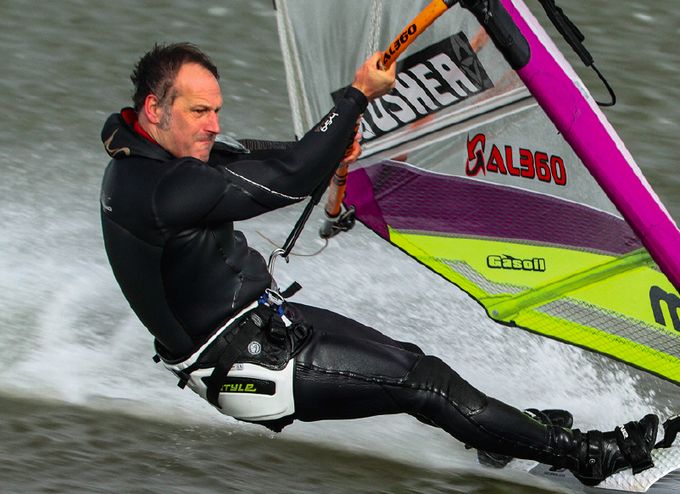Back in 2012 Steve Thorp smashed 50 knots and West Kirby – the holy grail for many a speedsailor. Here is the story of just how Thorpy and his custom board did it.
“To be honest, I just told him to make it as fast as hell, as I can sail anything. No compromises”
Speedsailing really is windsurfing for all – going fast has become accessible to all, and participation could not be easier – all that is required is a £100 GPS unit, and an open stretch of water with some wind. No matter where you are worldwide, or on what equipment, you can find out what speed you are doing.
With better equipment these days a lot more people are going faster than ever – a handful have finally broken the 50 knot barrier — with many more knocking on the door looking to come in. It is an exciting time to be a speedsailor. The constant push and rivalry from everyone’s speeds on the GPSspeed website, has led to the sport benefitting from increased participation.
One of the elite few to burst through the 50knot door to greatness, is the U.K’s Steve Thorp, who at only 76kg pretty much bucks the “big is fast” trend.

If you have ever seen him in action, or read his blog (stevethorp.co.uk), you will know he is probably the keenest windsurfer in existence. Everybody who’s into sailing gets ‘windsurfer’s dash’, but Thorpy has it all day, every day; consequently he’s always the longest on the water, and wouldn’t think twice about driving the full length of country and back to catch the best wind, biggest waves or a potential speed session.
In 2012 Steve hit the insane speed of 50.48knots. The location was Steve’s home patch, at West Kirby, which has long been known as probably the fastest speed strip in the U.K.
When the Kirby is ‘on’, many of the top Dutch and French sailors make the trip over. The Kirb is no easy place to sail in Force 8+. It takes balls of steel to throw yourself down a speed run, only inches from a concrete wall, where one error can spell absolute disaster or serious injury.
Then, if you make it down in one piece, you still have to deal with the death chop, just at the moment you are at full speed and going as broad as you dare.
Turning upwind and slowing down is not an option – upwind = concrete.
Needless to say, Steve has balls of steel, and turned to Moo Custom, the U.K’s leading custom board builder to help him develop the custom gear that’s required for pushing the speed barriers.
Based in Crosby, Jon Kennett from Moo had already been working closely with Farrel O’Shea on various speed board projects; Farrel’s speed and testing skills were a vital input to the constant development.
Also, being based only half an hour from Kirby, Moo were in the perfect position to react quickly, and put the testing feedback into development immediately.
As Steve is not the stereotypical speed sailor size, Jon was concerned that control was going to be a key issue. Even with 12kg of lead in his backpack, trying to keep in control at fifty knots is a lot to ask for. Jon explained the requirements for a Moo Custom speed board, based on Steve’s typically simple design brief “to make it as fast as hell, as I can sail anything. No compromises.”
Jon however was more detailed in his description: “The marriage of the outline of the board, the flow (thickness)/ bottom design and rail shape are all up for debate during the design and shaping. I decided to keep the bottom shape and outline simple, to facilitate the control/ease of use element, a decision that ultimately paid off. I was concerned that over complication would introduce elements of the unknown into the design. At West Kirby, one of the issues is the death chop at the end of the course, so keeping in control and managing to slow down without a major wipe out or twatting the wall at the end of a run, is vital. The juxtaposition between keeping the board small for control, but big enough for ease of use and glide is critical.
The rocker profile had been developed and honed over time with various boards that we had built. This was a top starting point for Steve’s final rocker design, and with a couple of tweaks the rocker stick was in place. This is an exact former of the rocker profile that is used when the board is being built.
When you consider the length of a windsurf board, even a 2% inaccuracy can result in being a couple of mm out at either end. This is totally unacceptable in any board, but a bin job for a speed board. After that, laminating the board is pretty straightforward, using lots of carbon in the correct place and a trick deck shape to keep the power on and the board crisp. With so much carbon, we had to keep the board naked for the ultimate graphic look, with only the bottom painted and polished for ultimate speediness.”
The final piece of the jigsaw, and one of the most important is the fin, as Jon says, “to stop the back overtaking the front.” It was here where Steve’s collaboration with Moo once again paid dividends. Steve’s job is a CNC mould maker, and as the main man behind the highly successful K4 fins, Steve was in a position to invest his time designing the ultimate speed fin, and build the moulds for Moo to laminate in carbon. Mould number three produced the champion fin, a 20cm asymmetric foil, laminated by Jon with over fifty layers of carbon strategically placed to control the stiffness and twist. Realistically the level of investment would never have happened if Steve wasn’t in the mould making business – a real bonus for speed kind.
So the homegrown team proved its worth in the global speed-sailing scene. With know-how, hand craftsmanship and a lot of bottle, one of the lightest speed-sailors out there has also become the fastest.
Here’s hoping for many more U.K. success stories to follow. Next stop, 55 knots?
Text by Oisin van Gelderen.





